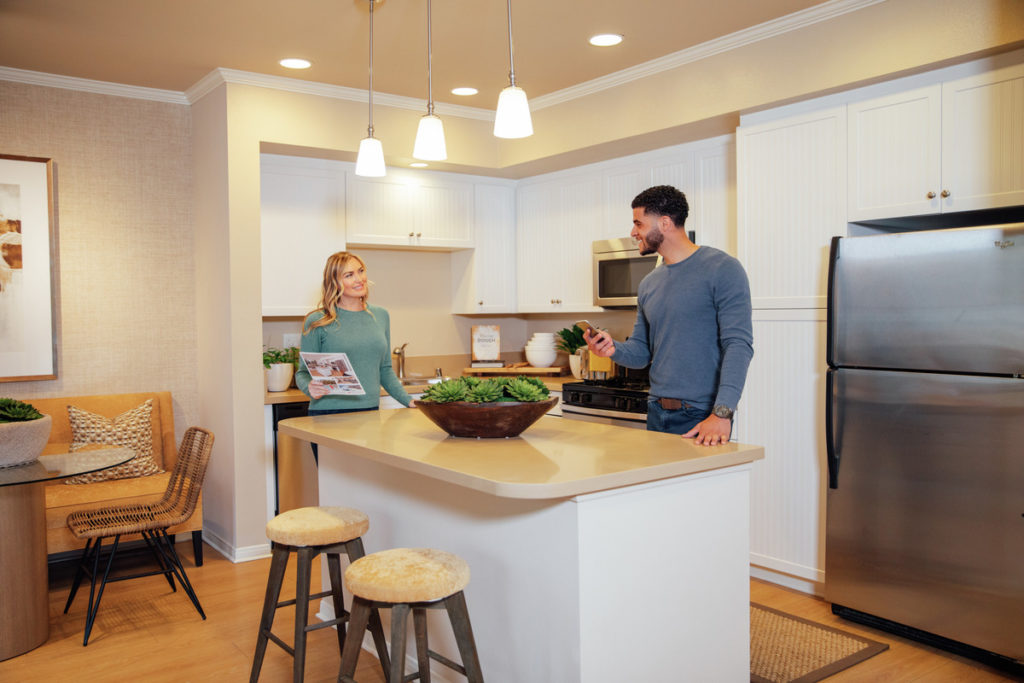
Signing an apartment lease is much more than just inking your name on a piece of paper. The process involves a decent amount of paperwork, an application fee, first and last month’s rent (if applicable), and something called a security deposit.
The security deposit can be a bit confusing. So with all the nuances in mind, here’s everything you need to know regarding the infamous security deposit and how it fits into your lease experience.
Security Deposit: What is It?
A security deposit is a payment a new resident provides his or her landlord or property management company. In the simplest terms, it’s a financial cushion that protects the landlord in case you cause damage to the home, or fail to pay rent in a given month.
Security deposits are refundable, and if you keep your apartment in good shape, you may receive money back at the end of your lease. As you’re budgeting for your new place, just make sure to factor in the security deposit before moving in.
Factoring the Cost of Security Deposits
A security deposit fee varies by state, apartment community, and resident, so it’s a little unpredictable. It will be different based on:
- Where the property is located: Not all states have a required cost limit, making it possible for the deposit to be as high as three months’ rent or as little as $100.
- If you have pets: You’ll have to factor in more to the deposit in case your furry friend leaves a mess behind. Many pet-friendly apartment communities also charge a monthly pet rent fee.
- If the apartment is furnished: A furnished apartment might require a more costly security deposit.
Your credit score: Landlords and management companies can access this information and use it to determine your level of risk as a resident. The lower your credit score, the riskier you are. Because of this, a lower credit score might mean a higher security deposit.
Make sure to check your credit score before starting the application process. That way, you’ll know where you stand and how it might impact your deposit. As you’re calculating one-time expenses overall, keep in mind that there may be other move-in costs besides the security deposit – an application fee, pet deposit, etc. Paying each with separate checks or electronic transfers will help you stay organized.
The Journey of the Security Deposit
Before moving in, you’ll likely receive a checklist of fees and payments to make before you can sign for your unit. Because it’s not quite a “sure thing” that the unit is yours at this point, it’s very important to pay your deposit on time.
Your security deposit can only be used for certain charges, which vary by state – for instance, damage to your unit beyond typical wear and tear. That’s why it’s important to fill out the move-in checklist accurately and in detail so that you aren’t charged for any damage that may have existed upon move-in.
 When you receive your refund depends on where your property is located. The time period can range from 14 to 60 days after you leave. Don’t be surprised if you see small deductions from your deposit. If your apartment isn’t left in the best condition, there may be deductions for noticeable damage (e.g., carpet stains, large holes in the wall, etc.).
When you receive your refund depends on where your property is located. The time period can range from 14 to 60 days after you leave. Don’t be surprised if you see small deductions from your deposit. If your apartment isn’t left in the best condition, there may be deductions for noticeable damage (e.g., carpet stains, large holes in the wall, etc.).
If there are deductions from your security deposit, you should receive documented reasons for them. Again, the documentation that you will receive will vary from state to state and from landlord to landlord, but might include:
- A list of charges that you owed but didn’t pay before move-out (e.g. unpaid rent)
- A list of damages and the cost to repair each
- Written evidence of estimates, bills, invoices, or receipts, with the cost of the repairs
What is Covered by a Security Deposit?
It’s not easy to list everything that could be covered by a security deposit because there are many ways damage can occur. So, here is the simplest way to look at it: A security deposit covers damage that the tenant themselves has created. This means damage that you, your child, your pet, your friends, or other residents in your home have created.
Repairs for any damage to the building that was out of your control – for example, from a natural disaster – will be paid for by your landlord or their insurance.
Your landlord will not usually be responsible for damage to your belongings – but a renter’s insurance policy, something that is required by many landlords – will cover some damage to your personal belongings.
 When in Doubt, Ask Questions
When in Doubt, Ask Questions
The amount and conditions of a security deposit can vary from state to state and property to property, but having knowledge of what it covers gives you a decent foundation. Always ask questions if you’re not sure about something, and do your due diligence when it comes to documenting existing damage before moving in.

 When in Doubt, Ask Questions
When in Doubt, Ask Questions





